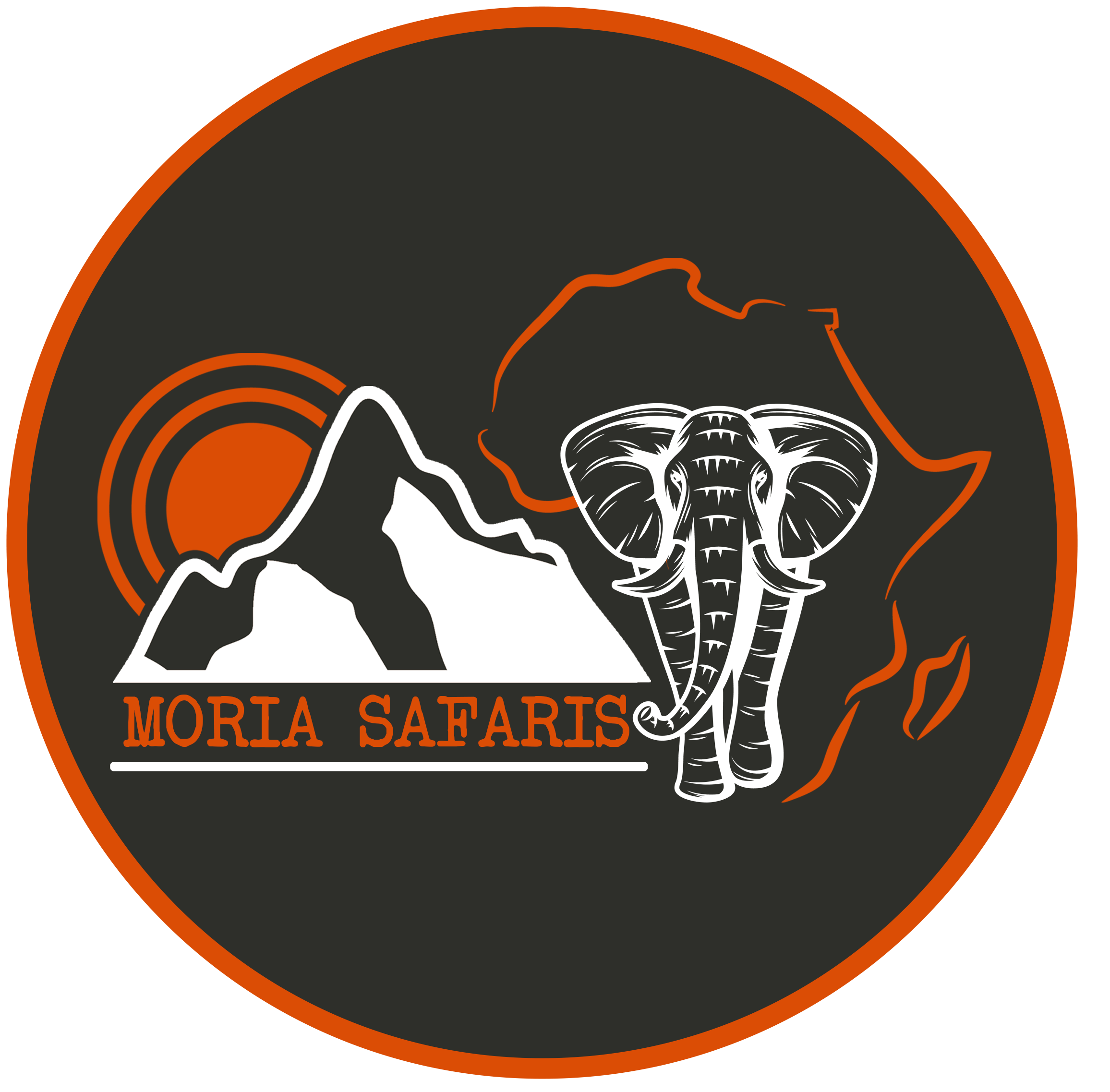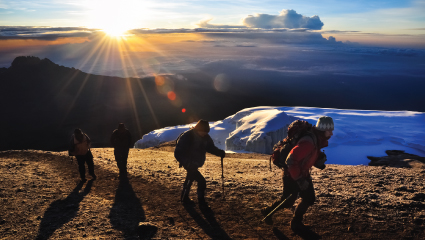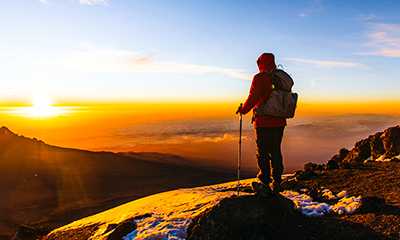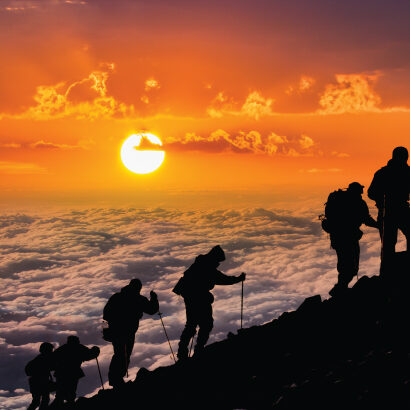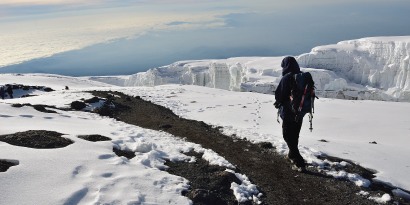Mount Kilimanjaro
Mount Kilimanjaro
Mount Kilimanjaro is a majestic and iconic landmark situated in Tanzania, East Africa. As the tallest freestanding mountain in the world, Kilimanjaro stands at approximately 19,341 feet (5,895 meters) above sea level. Its imposing presence and breathtaking beauty attract adventurers, nature enthusiasts, and climbers from all corners of the globe.
This dormant volcano consists of three distinct cones: Kibo, Mawenzi, and Shira. The highest peak, Uhuru Peak, is located on Kibo, which is also the central cone of the mountain. Its snow-capped summit is a stunning sight, contrasting against the surrounding African plains.
Kilimanjaro is a beacon for climbers seeking an extraordinary challenge. Each year, thousands of individuals embark on the journey to conquer its heights. While technically a non-technical climb, the altitude and diverse climate zones pose a formidable challenge. Climbers typically traverse through five distinct ecological zones: the cultivated lower slopes, the rainforest, the heather-moorland, the alpine desert, and finally, the arctic summit
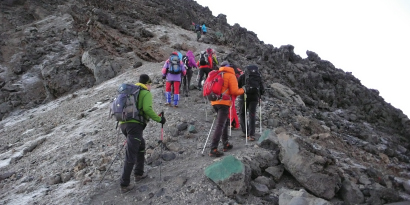
Key features of Mount Kilimanjaro
Mount Kilimanjaro, Africa's highest peak and the world's tallest freestanding mountain, boasts several key features that contribute to its significance and allure:
Elevation: Standing at approximately 19,341 feet (5,895 meters) above sea level, Kilimanjaro's towering height makes it a prominent natural landmark on the African continent.
-
-
-
Distinctive Climbing Routes: Kilimanjaro offers several climbing routes, each with its own unique scenery, challenges, and characteristics. The most popular routes include the Marangu, Machame, Lemosho, Rongai, and the longer Northern Circuit, providing diverse experiences for climbers.
-
Ecological Diversity: The mountain encompasses multiple ecological zones, offering a remarkable range of biodiversity. Climbers traverse through different landscapes, from lush rainforests and moorlands to alpine deserts and finally, the snow-capped summit. Each zone hosts its own unique flora and fauna, showcasing a variety of ecosystems within a single ascent.
-
Cultural Significance: Kilimanjaro holds cultural importance for local indigenous tribes, such as the Chagga and Maasai, who regard the mountain as sacred. Its presence in the cultural heritage of these communities adds to its significance beyond its natural beauty.
-
Glaciers and Snow-Capped Summit: Despite the impact of climate change, Kilimanjaro still retains its glaciers and snow-capped peak, contributing to its breathtaking visual appeal. The famous Uhuru Peak is the highest point, featuring glaciers that have been diminishing over the years due to global warming.
-
Accessibility: Unlike many high-altitude mountains, Kilimanjaro doesn’t require technical climbing skills. It attracts a wide range of climbers, from experienced mountaineers to adventurous enthusiasts, due to its accessibility and non-technical routes.
-
Challenging Altitude: While technically a non-technical climb, the altitude poses a significant challenge. Altitude sickness is a concern, emphasizing the importance of proper acclimatization during the ascent.
-
-
Inspiration and Adventure: Kilimanjaro has inspired countless adventurers, writers, artists, and filmmakers. Its mystique and allure draw individuals seeking adventure, personal challenges, and a connection to nature and the outdoors.
These key features collectively make Mount Kilimanjaro an iconic and sought-after destination for climbers and nature enthusiasts worldwide. Its unique blend of natural beauty, cultural significance, and challenge continues to captivate and inspire those who set their sights on conquering its heights
-
-
-
Best Time to Visit
- Overview
- Things To Consider
- Things To Do
- Mt. Kilimanjaro Route
- Things To consider in choosing Route
- Different Exercise For Mt. Kilimanjaro
The best time to visit Serengeti National Park depends on your interests, whether you want to witness the Great Migration, focus on game viewing, enjoy birdwatching, or experience cultural interactions. Each season offers its own unique experiences, so plan your visit based on your preferences and priorities.
BEST TIME TO VISIT THE SERENGETI NATIONAL PARK
January to February:
-
- This marks the beginning of Tanzania’s green season, making it an excellent time for birdwatching as migratory bird species are present.
-
- The famous Great Wildebeest Migration concentrates in the Ndutu area during these months, as it’s calving season when wildebeests give birth.
March:
-
- March is a transitional period, with the weather being uncertain, as it’s neither clearly dry nor the start of the rainy season.
-
- It’s almost the end of the wildebeest calving season in the Ndutu area.
April to May:
-
- These months are the rainy season, making it challenging to move around and enjoy the sun.
-
- The migration is expected to be in the south or central Serengeti.
-
- Fewer travelers visit during this period.
June to August:
-
- This is the beginning of the dry season and the peak season for safari visitors.
-
- In June, the Great Migration crosses the Grumeti River in the western Serengeti.
-
- The Great Migration makes its way north toward the Mara River for dramatic river crossings into the Masai Mara Reserve.
September to October:
-
- Still part of the dry season, these months see a reduction in the number of travelers.
-
- The Great Migration is expected to be in the Maasai Mara in Kenya.
November to December:
-
- This period experiences short rains.
-
- There are few travelers, with a small peak season from late December to early January.
-
- The migration returns, making its way to the south Serengeti and north Ngorongoro.
Hiking Mount Kilimanjaro is an adventure that requires careful planning and consideration due to its altitude, varied climate zones, and physical demands. Here are several crucial things to consider before embarking on a Kilimanjaro hike:
-
Fitness Level and Preparation: Kilimanjaro is a physically demanding climb. Adequate physical fitness is essential for the ascent. Engage in regular exercise and endurance training beforehand to prepare your body for the hike.
-
Acclimatization: Altitude sickness is a concern due to the rapid gain in altitude during the climb. Choose a route that allows for gradual acclimatization and provides enough time for your body to adjust to higher elevations.
-
Route Selection: Kilimanjaro offers various routes with different difficulty levels, scenery, and duration. Research and choose a route that aligns with your fitness, experience, and preferences. Routes like Machame and Lemosho are popular for their scenic beauty and better acclimatization profiles.
-
Guides and Porters: Hiring an experienced guide and porters is highly recommended. They provide essential support, guidance, carry equipment, and assist in emergencies. Ensure they are licensed and adhere to ethical and fair treatment practices.
-
Packing Essentials: Pack appropriate clothing for varying climates, including waterproof and windproof layers, warm clothing for cold temperatures, sturdy hiking boots, a comfortable backpack, headlamp, toiletries, and other necessary gear. Keep your backpack lightweight and essentials-focused.
-
Hydration and Nutrition: Stay hydrated throughout the climb by drinking plenty of water. Proper nutrition is crucial for energy levels. Carry snacks and meals that provide sustained energy, considering altitude-induced loss of appetite.
-
Altitude Sickness Awareness: Know the symptoms of altitude sickness and monitor your health regularly. Ascend slowly, drink enough water, and communicate any health concerns to your guide.
-
Responsible Trekking: Respect the environment and adhere to Leave No Trace principles. Dispose of waste properly, follow established trails, and minimize your impact on the mountain’s fragile ecosystems.
-
Weather Conditions: Kilimanjaro’s weather can be unpredictable. Be prepared for various weather conditions, including rain, wind, and extreme temperature changes. Dress in layers and bring suitable gear to adapt to changing weather.
-
Permits and Regulations: Obtain all necessary permits and adhere to park regulations. Respect the rules set by Kilimanjaro National Park authorities, including entry permits, camping regulations, and waste management.
Prioritize safety, preparation, and responsible trekking practices to ensure a fulfilling and safe hiking experience on Mount Kilimanjaro. Consulting with experienced guides or tour operators can provide valuable insights and guidance for a successful ascent.
While the primary attraction of Mount Kilimanjaro is its challenging climb to the summit, there are several other activities and experiences that visitors can enjoy in and around the region. Here are some things to do in and around Mount Kilimanjaro:
-
Climbing: The most popular activity is, of course, climbing Kilimanjaro. Whether you’re an experienced mountaineer or an adventurous beginner, there are various routes catering to different skill levels and preferences.
-
Explore the Surrounding Areas: Take time to explore the towns and villages near Kilimanjaro, such as Moshi and Arusha. Experience local culture, visit markets, interact with the communities, and learn about their traditions and daily life.
-
Wildlife Safaris: Combine your Kilimanjaro adventure with a wildlife safari in nearby national parks like Serengeti National Park, Ngorongoro Crater, or Tarangire National Park. Experience the incredible diversity of East Africa’s wildlife, including the Big Five (lion, elephant, buffalo, leopard, and rhinoceros).
-
Cultural Tours: Engage in cultural tours and experiences to learn about the customs, traditions, and heritage of local tribes such as the Chagga and Maasai. Visit villages, participate in cultural activities, and gain insight into their way of life.
-
Coffee Plantation Tours: Explore coffee plantations around the slopes of Kilimanjaro. Learn about the coffee-making process, from bean to cup, and enjoy freshly brewed coffee while taking in the stunning views.
-
Waterfall Hikes: Enjoy hikes to nearby waterfalls like Materuni or Marangu Falls, offering picturesque scenery and a chance to cool off after your Kilimanjaro climb.
-
Cultural and Educational Centers: Visit places like the Kilimanjaro Animal C.R.E.W. or the Kilimanjaro Heritage Centre to learn more about local wildlife conservation efforts and the region’s cultural history.
-
Relaxation and Spa: After a challenging climb, unwind and rejuvenate at various lodges or resorts around Kilimanjaro offering spa treatments and relaxation facilities.
-
Photography and Sightseeing: Capture stunning landscapes, sunrises, and vistas during your climb or from various viewpoints around the mountain. The diverse scenery provides ample opportunities for photography enthusiasts.
Remember to plan and allocate time for these activities, either before or after your Kilimanjaro climb to make the most of your visit to this beautiful region of Tanzania.
-
Mount Kilimanjaro offers several climbing routes, each with its own characteristics, scenery, difficulty levels, and acclimatization profiles. Here are some of the popular routes to climb Kilimanjaro:
-
Marangu Route (Coca-Cola Route): Often referred to as the “easiest” route, the Marangu Route is the most traditional and well-established path up Kilimanjaro. It features hut accommodation along the route, making it more comfortable for trekkers. This route is known for its gradual slope, but it’s also one of the busiest and may have less scenic variety compared to other routes.
-
Machame Route (Whiskey Route): Known for its scenic beauty, the Machame Route is a popular choice for trekkers seeking diverse landscapes. It is steeper than the Marangu Route but offers better acclimatization due to its longer duration. The route takes climbers through rainforests, heathlands, and alpine deserts before reaching the summit.
-
Lemosho Route: Considered one of the more scenic routes, the Lemosho Route offers a longer and more gradual ascent, allowing for better acclimatization. It traverses varied landscapes, including lush rainforests, heathlands, and Shira Plateau, providing stunning views and wildlife sightings.
-
Rongai Route: This route approaches Kilimanjaro from the northern side and is less crowded than other routes. It is known for its gradual slopes and is often chosen by those looking for a quieter climb. The Rongai Route passes through forests, offers panoramic views, and provides diverse scenery.
-
Northern Circuit Route: The longest route on Kilimanjaro, the Northern Circuit, is known for its excellent acclimatization profile due to its extended duration. It circles around the mountain’s northern slopes, offering panoramic views and diverse ecosystems. This route is less crowded but requires more time to complete.
-
Umbwe Route: Considered the most challenging route, the Umbwe Route is steep and direct, attracting experienced climbers seeking a more adventurous and less crowded climb. It ascends quickly and has stunning views but requires excellent fitness and previous high-altitude trekking experience.
Each route has its own advantages and considerations in terms of scenery, difficulty, acclimatization, and overall experience. It’s important to choose a route that aligns with your fitness level, climbing experience, and the type of experience you seek while climbing Kilimanjaro. Additionally, consulting with experienced guides or tour operators can provide valuable insights and help in selecting the most suitable route for your climb
-
Choosing the right route for climbing Mount Kilimanjaro involves considering various factors to ensure a safe, enjoyable, and successful ascent. Here are key factors to consider when selecting a route:
-
Route Difficulty and Climbing Experience: Different routes have varying difficulty levels. Consider your climbing experience, physical fitness, and comfort with high altitudes. Some routes, like the Umbwe Route, are more challenging and require prior high-altitude trekking experience, while others, such as the Marangu Route, are relatively less difficult.
-
Acclimatization Profile: Routes that allow for better acclimatization generally offer higher success rates. Longer routes with gradual ascents, such as the Lemosho or Northern Circuit, provide more time for your body to adjust to higher altitudes, reducing the risk of altitude sickness.
-
Scenery and Landscape: Each route offers unique landscapes and scenery. Some climbers prioritize breathtaking views and diverse landscapes, like the Machame or Lemosho Routes, while others might prefer quieter, less frequented paths, such as the Rongai or Northern Circuit.
-
Crowds and Traffic: Consider the level of traffic on the route. Popular routes like the Marangu Route tend to be busier, while lesser-known paths like the Northern Circuit or Rongai Route offer a more secluded experience with fewer climbers.
-
Hut Accommodation vs. Camping: Routes differ in accommodation options. The Marangu Route provides hut accommodation, offering more comfort, while most other routes involve camping. Decide whether you prefer sleeping in huts or tents during the climb.
-
Route Duration: Longer routes usually provide better acclimatization due to the gradual ascent. The duration of the climb can vary from 5 to 9 days or more, depending on the route chosen. Consider the amount of time you’re willing to spend on the mountain.
-
Weather and Seasons: Different routes might experience varying weather patterns and conditions. While Kilimanjaro can be climbed year-round, some seasons, like the rainy season (March to May), might affect trail conditions. Dry seasons (June to October and December to February) are generally recommended for better weather.
-
Cost and Budget: The cost of climbing Kilimanjaro can vary based on the route, tour operator, and services provided. Consider your budget and the amenities or services you prefer during the climb.
-
Personal Preferences and Objectives: Your personal preferences, such as solitude versus social interaction, the desire for a challenging climb, or a preference for a particular type of scenery, play a significant role in choosing the right route.
Carefully assessing these factors and aligning them with your abilities, preferences, and goals will help you select the most suitable route for your Mount Kilimanjaro climb. Consulting with experienced guides or tour operators can provide valuable guidance in choosing the ideal route for your expedition.
Preparing to hike Mount Kilimanjaro requires a good level of physical fitness and endurance. Here are some exercises and training routines that can help in preparing for the climb:
-
Cardiovascular Training: Engage in aerobic exercises to improve cardiovascular endurance. Activities like running, jogging, cycling, swimming, and brisk walking help build stamina, increase lung capacity, and prepare your body for sustained physical activity.
-
Hiking and Trekking: Incorporate regular hiking and trekking sessions to simulate the conditions you’ll face on Kilimanjaro. Gradually increase the difficulty and duration of hikes to prepare your muscles, joints, and stamina for long hours of trekking.
-
Strength Training: Focus on building strength, especially in the lower body, core, and back muscles. Exercises like squats, lunges, calf raises, step-ups, and leg presses help strengthen the legs for uphill climbs. Additionally, core exercises like planks, crunches, and back extensions improve stability and balance.
-
Stair Climbing: Utilize stairs or a stair climber machine to mimic uphill ascents. Climbing stairs helps strengthen leg muscles, improves cardiovascular fitness, and prepares you for the repetitive motion of ascending Kilimanjaro.
-
Interval Training: Incorporate interval training into your routine to simulate the fluctuating intensity of hiking. Alternate between periods of high-intensity exercise and periods of rest or lower intensity. This method helps improve overall endurance and stamina.
-
Backpack Training: Train with a loaded backpack to simulate the weight you’ll carry during the climb. Gradually increase the weight in your backpack and practice hiking with it to condition your body for the additional load.
-
Flexibility and Stretching: Perform regular stretching exercises to enhance flexibility and prevent injuries. Focus on stretching major muscle groups, including hamstrings, quadriceps, calves, hip flexors, and lower back.
-
Balance and Stability Training: Incorporate exercises that improve balance and stability, such as yoga, Pilates, or specific balance drills. This helps with navigating uneven terrain and maintaining stability during the climb.
-
Rest and Recovery: Allow sufficient rest between workout sessions to allow your muscles to recover and adapt to the training. Adequate rest is essential for preventing overuse injuries and optimizing performance.
-
Altitude Simulation (if possible): If feasible, consider training at higher altitudes or using altitude simulation equipment to acclimate your body to lower oxygen levels experienced during the climb.
Remember to gradually increase the intensity and duration of your workouts to avoid overexertion and injuries. Consult with a fitness professional or a healthcare provider before starting any new exercise regimen, especially if you have underlying health conditions or are new to strenuous physical activity.
